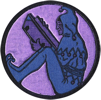 Fell asleep without pausing Red Dead Redemption.
Fell asleep without pausing Red Dead Redemption.
Woke up standing in Grand Theft Auto.

 Sometimes an anecdote from history stands up in a new light after we’ve learned a bit more about the world.
Sometimes an anecdote from history stands up in a new light after we’ve learned a bit more about the world.
Admiral Lord Cochrane was a 19th century British naval officer famous primarily for his service to South American revolutionaries. In his autobiography, he tells a story from his days as a midshipman about a ship’s parrot, a story that comes alive in the 21st century’s understanding of animal intelligence.
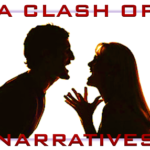
 “I wish I could do what you do!”
“I wish I could do what you do!”
This is something most of us have heard from someone, at some point. Our individual gift shines through—whether it’s writing, or slam-dunking, or repairing a car, or finding the discrepancy in a financial report, or singing, or convincing a salesperson to give up a good deal—and the envious praise follows.
As a writer, however, when people tell me that they are impressed at my storytelling or wish they could do what I do, I am often amused by the glamor surrounding the construction of narratives. The irony is that writers don’t do anything other people don’t do; writers just do it consciously.
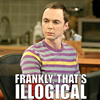
 With Union Station getting a make-over due to crowding and WMATA constantly in the news, I felt it was time to talk about trains again.
With Union Station getting a make-over due to crowding and WMATA constantly in the news, I felt it was time to talk about trains again.
And, to kick it off, there’s a predictably myopic pro-private* critique of the DC Metro system over at the United Liberty website, laying out “5 Policies keeping WMATA Dysfunctional.”

 An ubiquitous theme in art criticism is novelty.
An ubiquitous theme in art criticism is novelty.
Critics often praise artwork—painting, music, films, books—for “breaking new ground” or being innovative, while they condemn others for being cliché, formulaic, or “predictable.” Transgression and experimentation are seen as virtues in themselves, without necessary reference to any other artistic value, any explicit goal, or social good.
In the same way, anything familiar is condemned as vulgar convention.
To the chagrin of these critics (or perhaps to their smug satisfaction) the art they praise for its novelty and alleged “courage” is often ignored or openly despised by the general population, while the art they pan as “hackneyed” is often insanely popular. And when these critics also happen to champion humanism or the interests of The People, the irony seems lost on them when the real-life humans who make up The People hate the art they idealize.
What’s going on here?
Simple: the aesthetic ideals of these critics are completely out of whack with human reality.
The real question? Is innovation a meaningful, mature measure of value in art or, particularly, in literature?
![]() In case you didn’t know, “coming out” is a concept from LGBT culture referring to the transition from hiding one’s sexual orientation to proclaiming it in public. Coming out has become a widespread idea, even beyond the LGBT community. For example, Wiccans jokingly talk about “coming out of the broom closet” when they tell their friends and family of their religion.
In case you didn’t know, “coming out” is a concept from LGBT culture referring to the transition from hiding one’s sexual orientation to proclaiming it in public. Coming out has become a widespread idea, even beyond the LGBT community. For example, Wiccans jokingly talk about “coming out of the broom closet” when they tell their friends and family of their religion.
Someone who’d read On the Head of a Pin [Kindle | Nook] (whom I’ll call Rob because he/she requested anonymity) emailed me recently to ask if it was a sort of “coming out” story.
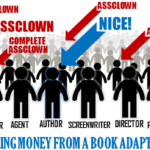
 In protest of the homophobic views of author Orson Scott Card, many are talking about boycotting the upcoming film adaptation of his best-selling novel Ender’s Game.
In protest of the homophobic views of author Orson Scott Card, many are talking about boycotting the upcoming film adaptation of his best-selling novel Ender’s Game.
Before anyone pats themselves on the back for keeping a few dimes of profit out of the pocket of a bigoted assclown, let’s take a look at the reality of outrage-based boycotting.

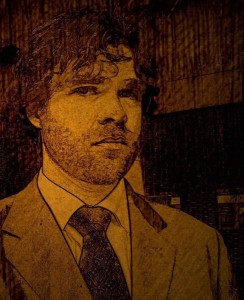 There’s a Buzzfeed list swinging around the internet (that phrase is so going to catch on) about bestselling author Neil Gaiman and the “14 Things You Don’t Know” about him.
There’s a Buzzfeed list swinging around the internet (that phrase is so going to catch on) about bestselling author Neil Gaiman and the “14 Things You Don’t Know” about him.
I was surprised to find that the very first item on the list was an obscure food we both love.
So, in the interest of seeking similarities, here’s his list compared to me.